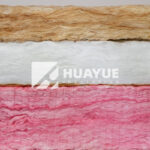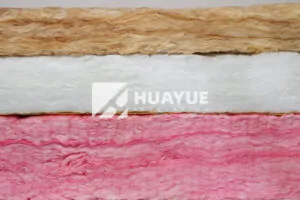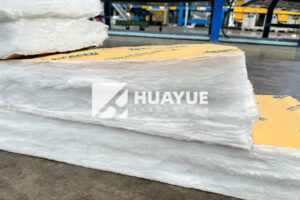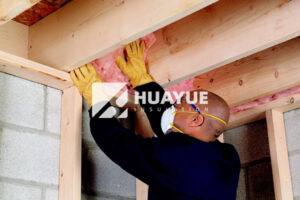Is the compression of fiberglass insulation a problem?
Fiberglass insulation is common, but many wonder how much compression is too much. Will squeezing or flattening the insulation create costly issues?
Compressing fiberglass insulation can reduce its ability to stop heat flow. When thickness drops, R-value falls. Compressed insulation may not meet code or provide enough thermal performance.
Some installers think compressing batts can make them fit better and even reduce air gaps. I wondered early in my career if that was true. But I learned quickly that compression is not harmless—it can have lasting effects. Let’s look at what really happens when you squeeze fiberglass insulation.
What happens to fiberglass insulation when you compress it?
Many worry that compressed insulation will fail at its job. Flattened batts could mean a drafty, less comfortable building. Is that what happens?
When fiberglass insulation is compressed beyond its intended thickness, its R-value per inch rises, but the total R-value drops because you have less overall material. For example, compressing an R-19 batt designed for a 6-inch space into a 4-inch wall reduces its total R-value.
When you push insulation into a too-tight space, the glass fibers pack together so air pockets disappear. Air pockets are what really stop heat. Compressing squeezes out those gaps, making the insulation less effective. If you put an R-19 batt in a 2×4 wall that’s only about 3.5 inches deep, you will not get R-19 anymore. Table 1 shows how R-value changes with compression:
| Original Thickness | Original R-Value | Compressed Thickness | Approx. New R-Value |
|---|---|---|---|
| 6.25 inches | R-19 | 3.5 inches | R-13 |
| 3.5 inches | R-13 | 2.5 inches | R-10 |
So, while each inch of insulation resists heat a bit better when compressed, you lose overall performance because you have less material. The insulation can also feel stiffer and harder to install.
How much compression is too much in fiberglass insulation?
If you press fiberglass a little, is it okay, or does just a small squeeze hurt performance? Where should you draw the line?
Small amounts of compression—under half an inch—may have little effect because the fibers are still loose enough to trap air. But when you force batts into much thinner spaces than they were made for, you will lose R-value. Insulation manufacturers publish charts that show R-value by thickness. The correct practice: always match the insulation thickness to your wall or cavity, not the other way around.

When I first started specifying insulation, I tried shortcuts, like using thicker batts in thinner cavities. I soon realized this did not save money—it led to projects failing inspections. Codes require insulation with a minimum R-value after it is installed, so thickness matters. It is important to pick the right product for your wall, ceiling, or tank, and avoid big size mismatches.
| Application | Space Depth | Max Uncompressed R-value | R-value if Compressed |
|---|---|---|---|
| 2×4 wall | 3.5 in | R-13 | R-13 (No Compression) |
| 2×6 wall | 5.5 in | R-21 | R-19 (if overstuffed) |
| Ceiling cavity | 10 in | R-30 | R-25 (if overfilled) |
Choosing insulation that “just fits” always works better. Squeezing thicker batts never increases performance.
Does compression of fiberglass insulation cause new problems?
If R-value loss is clear, what about other problems? Does compression bring issues beyond just less insulation?
Besides reduced thermal efficiency, compressed fiberglass can leave gaps or voids, especially when squeezed behind pipes, wiring, or around corners. These gaps allow drafts, moisture, and even pests inside. In some situations, over-compressed insulation may sag or slip out of place over time. That can mean more cold spots and higher heating costs.

I once visited a project where compressed batts left bottom corners wide open behind tanks. We saw frost buildup and even a little dampness. After replacing the compressed insulation with the correct thickness cut to fit, the problem disappeared. It was a lesson in respecting what the manufacturer’s label says about thickness.
| Problem Caused by Compression | Possible Result |
|---|---|
| Loss of R-value | Higher energy bills |
| Void behind insulation | Drafts or hot/cold spots |
| Difficulty filling corners | Moisture intrusion or CUI* risk |
| Sagging over time | Uneven insulation coverage |
*Corrosion Under Insulation, especially critical for tanks and pipes
Are there better alternatives when space is limited?
What if you run into a space that cannot take the insulation thickness you want? Is compressing fiberglass the only answer?
In areas where space is limited—like tank jackets, pipe chases, or dense wall cavities—there are higher density insulation products designed to provide the same R-value in less thickness. For example, rigid foam boards or mineral wool batts give more insulation in a thinner package. In special cases, foam glass insulation offers excellent durability, fire resistance, and non-absorption while maintaining thermal performance at lower thicknesses. I found this useful on cryogenic tanks where every millimeter counts.

Rather than risking a failed installation by compressing batts, I look for products that are made for tight spots. Table 3 breaks down major alternatives:
| Material Type | Typical R-value/inch | Key Benefits | Best Use Cases |
|---|---|---|---|
| Fiberglass batt | 3.0 – 3.7 | Low cost, flexible | Standard wall cavities |
| Mineral wool batt | 3.7 – 4.2 | Fire-proof, water-resistant | High temp, fire-rated |
| Rigid foam board | 5.0 – 6.5 | High R/inch, moisture-resistant | Limited space, exteriors |
| Foam glass block | 3.4 – 3.8 | Non-absorbent, CUI-proof, sturdy | Tanks, pipes, cryogenics |
Choosing the right insulation for the available space ensures you get the thermal performance, safety, and lifespan you need, without risky shortcuts.
Conclusion
Compressing fiberglass insulation drops its R-value and can cause problems, so always match the right thickness to your space and use purpose-made products when space is tight.
You may also be interested in:
Ready to Get Started?
Get in touch with our experts for personalized solutions tailored to your needs.
Get Free QuoteLatest Articles

Eco Batt Insulation: What You Need to Know?
Dec 12, 2025
Let's Work Together
Ready to take your business to the next level? Get in touch with our team of experts and let's discuss how we can help you achieve your goals.
Get Free Solutions






